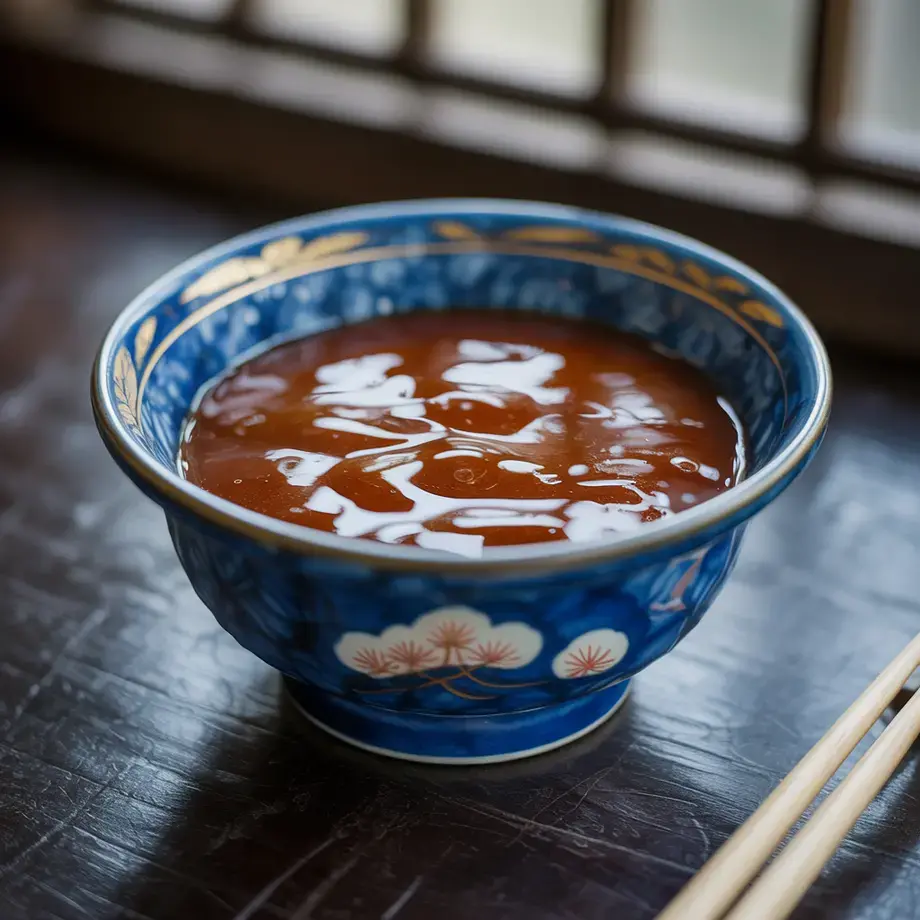Simpler than it seems, satay sauce only takes a couple of quick steps to make and is an instant crowdpleaser. Read on to discover a satay sauce recipe and to learn about the origins of this downright delicious sweet and salty sauce.
Peanut butter: 3 tbsp / 1.5 oz
Coconut milk: 200ml / 7 oz
Soy sauce: 1 tbsp / 0.5 oz
Curry powder: 1 tbsp / 0.5 oz
Honey: 1 tsp / 0.2 oz
Lime juice: 1
Chilli flakes: ½ tsp / 0.1 oz (optional)
Coriander: To garnish
Sesame seeds: To garnish
Place the satay sauce ingredients (soy sauce, curry powder, smooth peanut butter, honey and coconut milk) into a pan, excluding the lime juice.
Warm over a low to medium heat, whilst continuously stirring. The sauce will start to thicken, but be careful not to let it boil.
Once thickened, add the lime juice.
Serve and sprinkle with chilli flakes (if using), fresh coriander and sesame seeds.
Tips & tricks
If you want to make satay sauce in a more traditional way, you can roast your own peanuts and then grind them into a paste ahead of cooking, in place of peanut butter. If you’re happy with using peanut butter as a shortcut, you can twist the satay sauce recipe above by using crunchy peanut butter, if you prefer texture in the sauce. Some chefs will stir in chopped peanuts after cooking to add this crunch too.
Is satay sauce spicy? It doesn’t have to be. When it comes to spice, your palate is in charge. You can add more or fewer chilli flakes and experiment with different flavours outside of curry powder, like coriander.
Many recipes include fish sauce, but we’ve kept this out of the recipe above for a vegetarian-friendly option.
Origin of satay sauce
Satay sauce has its roots in Indonesia with the word satay or ‘sate’ deriving from Indonesian and Malaysian languages. It’s found throughout Southeast Asian dishes and has existed for centuries. History relays that satay was conjured up by street vendors in Java, inspired by Indian kebabs introduced to the island by merchants. Thailand and Malaysia also lay claim to it, but it’s generally widely accepted to have originated in Indonesia. Today it’s enjoyed all over the world in a variety of cuisines. In its most basic form, it’s a mixture of ground peanuts, spices and coconut milk and is sometimes simply called peanut satay sauce in Western cooking.
How to eat satay sauce
Satay sauce is best known for its pairing with skewered meats, with chicken being a particularly popular choice. You can find a tasty chicken satay skewers recipe here with a variation on how to make satay. This recipe calls for the chicken to be marinated in advance, which is common in the use of satay sauce in cooking. Or if you prefer pork, give this delicious pork satay a try, ideal for hosting brunch at home. If you’re serving vegetarian dishes, satay can be used as a dip for carrot and cucumber sticks or you can branch out into cooking tempeh which is a great meat alternative for pairing with satay sauce.
Can it be made ahead?
One brilliant thing about satay sauce is it can be made ahead and often recipes will call for this if the meat requires marinating. This makes it a perfect choice for entertaining, where the chicken or pork simply needs to be cooked through to serve, with all the trickier prep work completed ahead of time. It might also be why it’s become popular in BBQ dishes, as a natural accompaniment to many different meats, as well as being used for vegetarian skewers with tofu or tempeh.
Storage
Satay sauce will last for around three days in the fridge and can even be frozen for a couple of months. It’s possible to reheat the sauce gently, although it has the potential to separate slightly. Usually, room temperature is recommended for serving.








